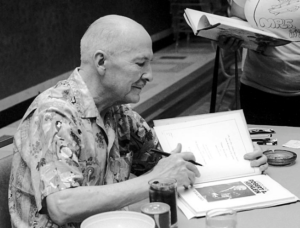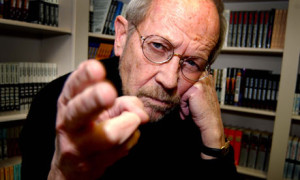Are there rules for writers? Some say yes, some say no, while some say rules are meant to be broken. I believe there are rules. Perhaps they are really more like guidelines, to paraphrase Hector Barbossa from Pirates of the Caribbean, but they are guidelines worth knowing and heeding. If there’s a good reason to break one, especially if it helps the story or unblocks you, by all means break it, but it helps to know the rule (guideline) first.
Today’s Words of Wisdom dives into the TKZ archives to find an intriguing grab bag of rules. Joe Moore lays out the rules of writing, with humor, wit and more than a little wisdom. I share the first fifteen on his list, and it’s worth clicking on the date-link at the bottom of this excerpt to read the other nineteen.
Next, John Gilstrap gives us his “Ten Rules for Manuscript Evaluation,” thoughtful advice on how to approach a manuscript you plan on submitting for feedback at a conference. His first five rules are included in this excerpt, and again it’s worth clicking on the date-link below to read all ten.
Finally, James Scott Bell looks at science fiction grand master Robert A. Heinlein’s “Five Rules for Writers,” and provides commentary on each. Here too it’s worth clicking on the link to read his full commentary.

Who said there are no rules for writers? Of course there are:
- Verbs HAS to agree with their subjects.
2. Prepositions are not words to end sentences with.
3. And don’t start a sentence with a conjunction.
4. It is wrong to ever split an infinitive.
5. Avoid clichés like the plague.
6. Also, always avoid annoying alliteration.
7. Be more or less specific.
8. Parenthetical remarks (however relevant) are (usually) unnecessary.
9. Also too, never, ever use repetitive redundancies.
10. No sentence fragments.
11. Contractions aren’t necessary and shouldn’t be used.
12. Foreign words and phrases are not apropos.
13. Do not be redundant; do not use more words than necessary; it’s highly superfluous.
14. One should NEVER generalize.
15. Comparisons are as bad as clichés.
Joe Moore—December 17, 2008
Over the years, then, I have developed a list of Gilstrap’s Ten Rules for Manuscript Evaluation:
1. Number your pages and put your name or project title on every page. The reality is that I will lose your paper clip and I will drop your papers on the floor at least once. I don’t do this on purpose; it just always happens. Sometimes the pages get separated in my briefcase. However it happens, jumbled papers are jumbled papers. It helps to know which ones belong to whom, and in what order.
2. Have confidence in Times New Roman 12-point type. Reducing the font size to sneak in more story does not slip past unnoticed. I recently participated in a conference where someone actually gave me 15 pages of double-spaced 8-point type. Ignoring the fact that it pissed me off, I literally could not read the text. While I like to think of myself as young, my eyes are marching toward old age.
3. For me to believe that your story has any hope of success, something must happen in the first two hundred words. That’s the length of my interest fuse. Billowing clouds, pouring rain and beautiful flowers are not action. Characters interacting with each other or with their environment is action.
4. If you insist on walking into the whirling propeller that is a prologue, check first to make sure that your prologue is in fact not your first chapter in disguise. Next check to verify that your prologue is truly for the benefit of the reader, and not a crutch for the writer who needs to dump a bunch of backstory so that the first chapter will make sense.
5. Ten pages are plenty. Actually, five pages are plenty, but I understand that conference organizers can tout the larger number more easily. In my experience, unless dealing with a journeyman writer, the sins committed in the first few pages are replicated throughout. It’s rare that I discover a new issue on page thirteen or fifteen that hasn’t been noted several times previously.
John Gilstrap—July 22, 2011
Robert A. Heinlein’s “Five Rules for Writers.” They are as follows:
Rule One: You must write.
Rule Two: You must finish what you start.
Rule Three: You must refrain from rewriting, except to editorial order.
Rule Four: You must put it on the market.
Rule Five: You must keep it on the market until it has sold.
I’d like to offer my commentary on this list.
Rule One: You must write.
Pretty self-evident. You can’t sell what you don’t produce. The writers of Heinlein’s era all had quotas. Pulp writers like W. T. Ballard and Erle Stanley Gardner wrote a million words or more a year. Fred Faust (aka Max Brand) wrote four thousand words a day, every day. They did so because they were getting a penny or two a word, and they needed to put food on the table.
I always advise writers to figure out how many words they can comfortably write in a week, considering their other obligations. Now up that number by 10% and make that the goal. Revise the number every year. Keep track of your words on a spreadsheet. I can tell you how many words I’ve written per day, per week, per year since the year 2000.
Rule Two: You must finish what you start.
I remember when I finished my first (unpublished, and it shall stay unpublished) novel. I was still trying to figure out this craft of ours and knew I had a long way to go. But I learned a whole lot just from the act of finishing. It also felt good, and motivated me to keep going.
Heinlein was primarily thinking about short stories here, so the act of finishing was an easier task. With a novel, there’s always a moment when you think it stinks. When you wonder if you should keep going for another 50k words. Fight through it and finish the dang thing. Nothing is wasted. At the very least you’ll become a stronger writer.
Should a project ever be abandoned? If you’ve done sufficient planning and have the right foundation, I’d say no. If you’re a pantser … well, the temptation to set something aside is more pronounced. But you chose to be a panster, so deal with it.
Rule Three: You must refrain from rewriting, except to editorial order.
This is a bad rule if taken at face value. Again, Heinlein was thinking about the short story market. With novel-length fiction, the old saw still applies: Writing is re-writing.
I’ve heard a certain #1 bestselling writer state that he only does one draft and that’s it. Upon closer examination, however, that writer is revising pages daily as he goes, so it comes out to the same thing—re-writing.
As for “editorial order,” Heinlein meant that once a story sold—which meant actual payment—you made the changes the editor wanted (that is, if you wanted him to send you the check!)
For all writers, a skilled editor or reliable beta readers give us an all-important extra set of eyes. Don’t skip this step. There’s always something you need to fix!
James Scott Bell—December 11, 2018
***
There you have it, three different sets of rules for writers. Do you believe that there are rules for writers? Do any of these resonate with you? What rules have you broken, and if so, why?






